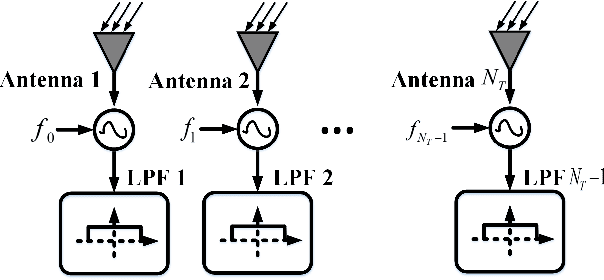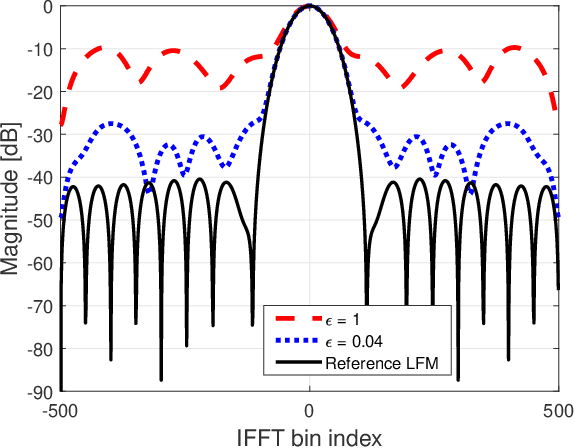Waveform Optimization with SINR Criteria for FDA Radar in the Presence of Signal-Dependent Mainlobe Interference
Paper and Code
Apr 14, 2022



In this paper, we focus on the design of the transmit waveforms of a frequency diverse array (FDA) in order to improve the output signal-to-interference-plus-noise ratio (SINR) in the presence of signal-dependent mainlobe interference. Since the classical multi-carrier matched filtering-based FDA receiver cannot effectively utilize the waveform diversity of FDA, a novel FDA receiver framework based on multi-channel mixing and low-pass filtering is developed to keep the separation of the transmit waveform at the receiver side, while preserving the FDA range-controllable degrees of freedom. Furthermore, a range-angle minimum variance distortionless response beamforming technique is introduced to synthesize receiver filter weights with the ability to suppress a possible signal-dependent mainlobe interference. The resulting FDA transmit waveform design problem is initially formulated as an optimization problem consisting of a non-convex objective function and multiple non-convex constraints. To efficiently slove this, we introduce two algorithms, one based on a signal relaxation technique, and the other based on the majorization minimization technique. The preferable performance of the proposed multi-channel low-pass filtering receiver and the optimized transmit waveforms is illustrated using numerical simulations, indicating that the resulting FDA system is not only able to effectively suppress mainlobe interference, but also to yield estimates with a higher SINR than the FDA system without waveform optimization.
 Add to Chrome
Add to Chrome Add to Firefox
Add to Firefox Add to Edge
Add to Edge